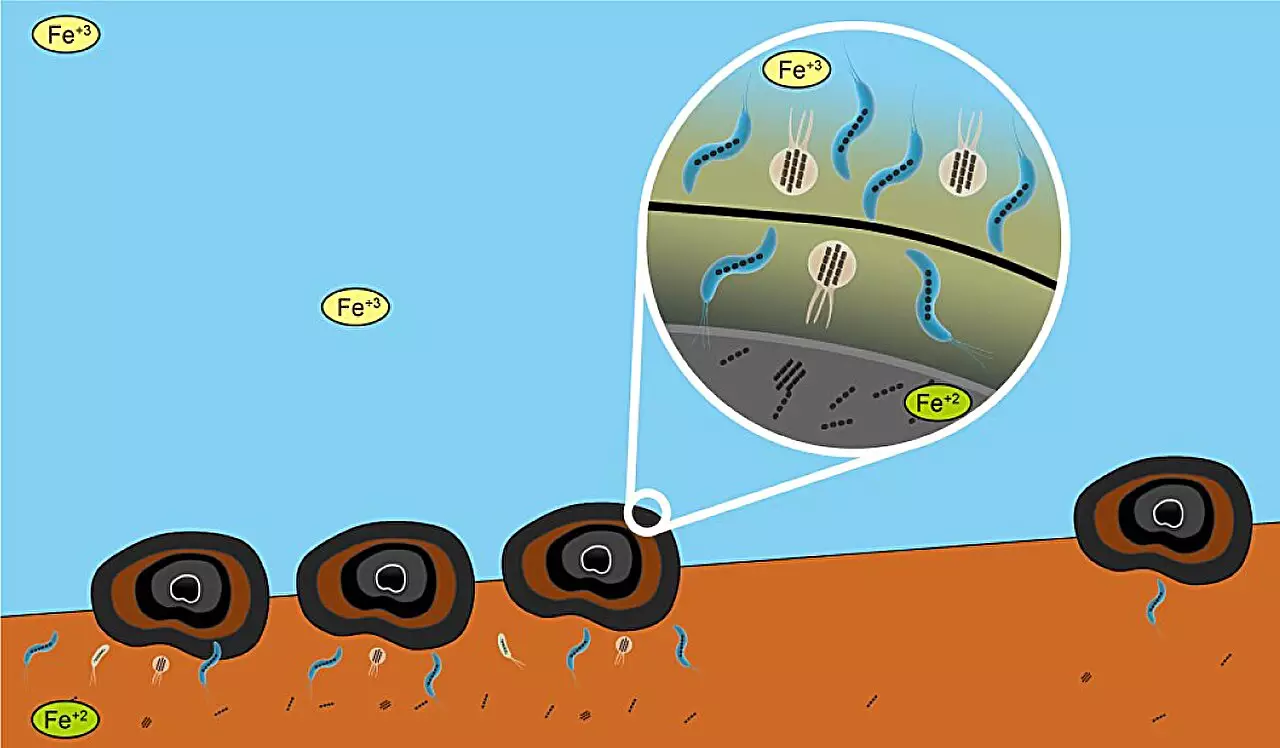Polymetallic nodules, often compared to the size of potatoes, lie scattered across the ocean floor, primarily in the Clarion-Clipperton Fracture Zone (CCFZ) situated south of Hawaii. These formations are not merely geological curiosities; they harbor a wealth of economically significant minerals such as nickel, cobalt, and manganese, making them the target of growing interest from the mining industry. As the world seeks new resources to meet technological demands, the potential for deep-sea mining raises both environmental concerns and ethical dilemmas.
Understanding how these nodules develop is complex, with several theories presented by researchers. The consensus suggests that they form through the gradual precipitation of metallic elements from seawater. However, recent studies indicate that microorganisms may play a crucial role in this process. Specifically, magnetotactic bacteria, known for their unique magnetic organelles that resemble tiny compass needles, potentially contribute to the accumulation of minerals within these nodules.
Intriguingly, the nodules often contain biogenic magnetite, the remnants of these bacteria. This link between microbial life and mineral formation hints at a deeper ecological relationship, urging further investigation into the subtleties of nodule development. By examining interactions at this microscopic level, researchers can glean insights into not just the nodules themselves, but the broader underwater ecosystems they inhabit.
A recent initiative, detailed in the Journal of Geophysical Research: Solid Earth, deploys innovative techniques to study the relationship between bacteria and nodule distribution. Using a combination of advanced tools, including a vibrating sample magnetometer, electron microscopes, and spectroscopy, scientists analyzed samples collected during a 2013 research expedition. The results paint an intriguing picture of how various sources contribute to the composition of magnetic minerals in the CCFZ.
The findings delineated three primary sources of magnetic materials: airborne dust, volcanic ash, and biogenic contributions from bacteria. The geographic variation in magnetite concentrations suggests significant transport mechanisms, where winds carry sediments across sea interstices. Remarkably, volcanic-generated magnetite adds yet another layer of complexity, originating from the erosion of island chains, including the Line Islands and Hawaii.
The study also revealed a striking correlation between the abundance of biogenic magnetite and regions rich in polymetallic nodules. This relationship led researchers to hypothesize the existence of anaerobic microenvironments—conditions enriched with carbon and low in oxygen—which can promote bacterial activity and, in turn, bolster nodule growth.
As interest in deep-sea mining escalates, the ecological implications of extracting these valuable resources cannot be overlooked. While the appeal of acquiring rare minerals is significant, it raises pressing questions about the sustainability of such practices. The interaction between mining activities and the delicate balance of microbial life in these undersea environments poses significant risks that warrant rigorous examination before embarking on extraction ventures.
Polymetallic nodules are more than valuable minerals; they represent an intricate tapestry of geological and biological interactions. As exploration intensifies in regions like the CCFZ, understanding these complex relationships will be essential. The insights garnered from ongoing research can guide responsible management strategies for this wealth, balancing economic aspirations with ecological preservation. The future of deep-sea mining may hinge not only on technological advancement but also on our commitment to safeguarding oceanic ecosystems for generations to come.

